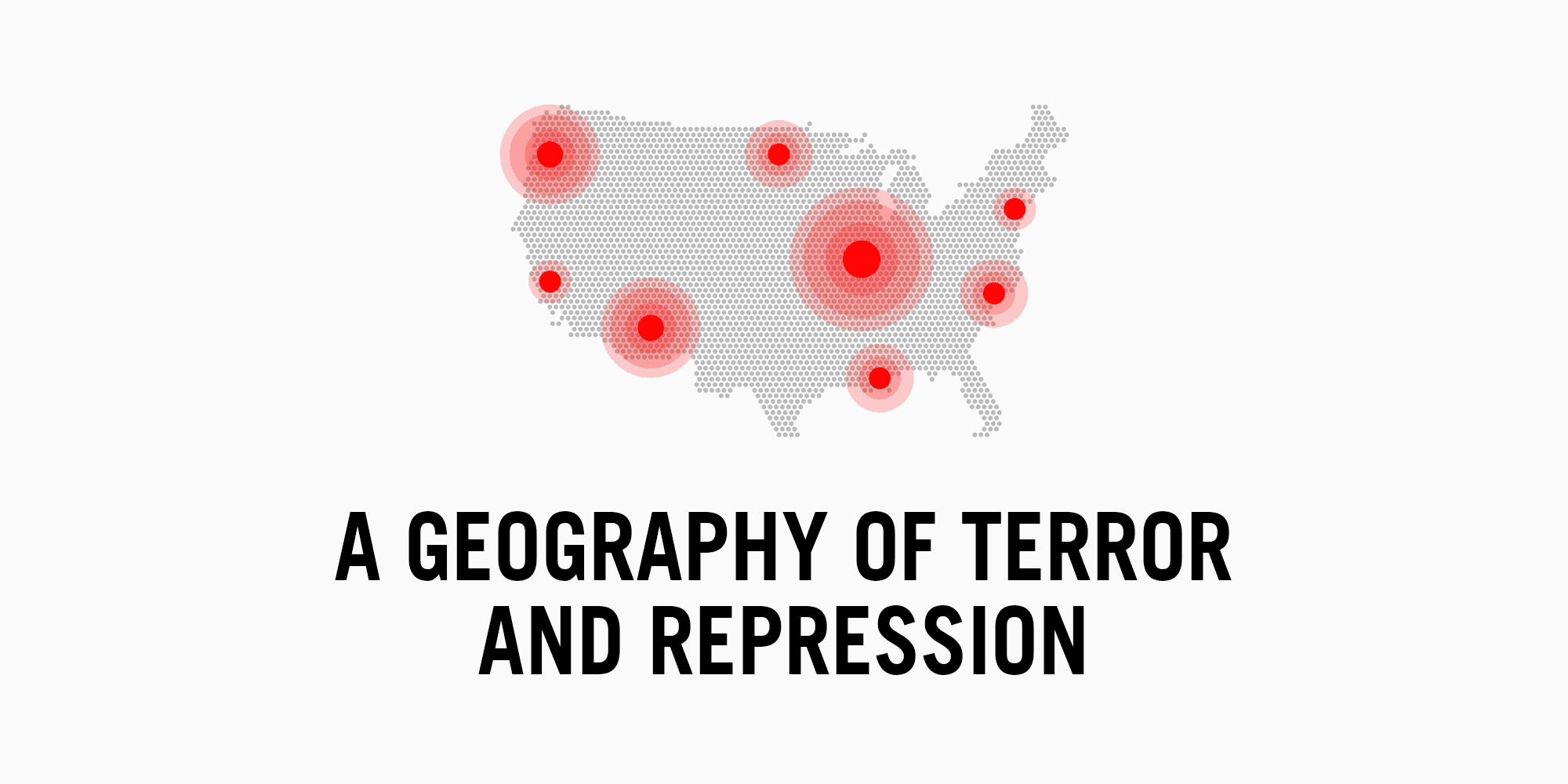ProjectsResearch
Examining the role of private military in U.S. policing, immigration, and prosecution
A mapping project that explores how counterterrorism practices and private military contractors have been deployed in response to natural disasters, immigration, and democratic protest in the United States.
Role
Researcher
Affiliation
University of Toronto
Timeline
Coming Soon
Links
In Development
A Geography of Terror and Repression excavates the integration of U.S. War on Terror military tactics into American policing, immigration, and prosecution from Hurricane Katrina to the present day. In response to the September 11, 2001 attacks on the United States, President George W. Bush announced the U.S. commitment to a global War on Terror that sought to dismantle transnational terrorist organizations and the networks of private and state funding that supported them. Nearly twenty years on, this commitment has resulted in massive investments in military funding and surveillance technology while also raising questions about privacy, the protection of individual liberties, and the experiences of state violence borne by racialized communities.
Not long after the creation of the homeland security state, Hurricane Katrina and the 2005 flooding of New Orleans offered a glimpse of the dystopian effects of the U.S. counterterrorism. In the post-Katrina moment, anti-Black racism and law-and-order rhetoric intersected with counterterror security to assault the civil, constitutional, and humanitarian rights of people across the Gulf Coast and, particularly, in New Orleans. Amidst the widespread suffering of largely poor and Black New Orleanians, state and federal officials, the news media, and private citizens characterized survivors as “insurgents” and national security risks. Heavily armed police, military, and paramilitary forces herded alleged looters and, in one instance, assumed terrorists into an outdoor detention facility modelled after Guantánamo Bay.
Since then, the incorporation of War on Terror military tactics into domestic governance has continued unabated. State and federal agencies portrayed the #NoDAPL protests at Standing Rock, North Dakota, as a “pipeline insurgency” to be suppressed by private security forces. In Portland, Oregon, contractors snatched up Black Lives Matter protestors, driving them away in unmarked vans. Along the U.S.-Mexico border, similarly employed contractors detain and deport unaccompanied Central American minors in a “shadow” immigration system outside of existing legal channels. This project excavates one common thread connecting each of these events: the growing prevalence of counterterror rhetoric and policy not only in moments of crisis but, increasingly, in response to democratic expression.